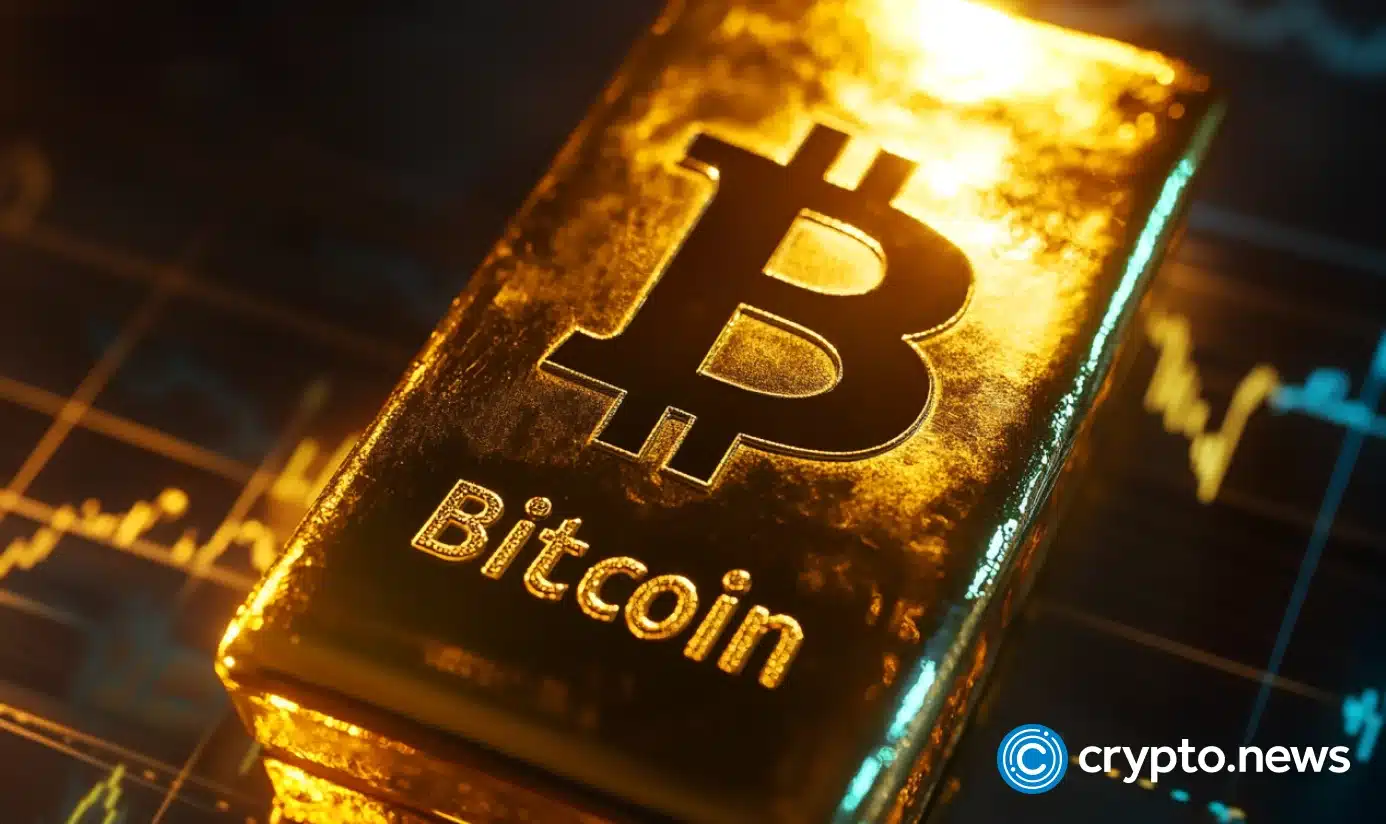Sure! Here’s a rewritten version of the content while preserving the HTML tags:

While central banks have historically depended on gold as a secure asset, Bitcoin is now gaining attention with prices approaching record levels. Analysts Marion Laboure and Camilla Siazon suggest that both assets could coexist on central bank balance sheets, each contributing to reserve diversification.
Summary
- Gold is reaching new peaks, with prices at $3,703 per ounce, while Bitcoin continues to rise, hovering near its all-time high after exceeding $123,500 in August.
- Analysts from Deutsche Bank believe the two assets could “complement” each other on central bank balance sheets as alternative reserves.
- They also observe that Bitcoin’s volatility is beginning to stabilize, indicating it might grow alongside gold rather than replace it.
By 2025, gold and Bitcoin (BTC) are showing robust performance, and according to Deutsche Bank analysts Marion Laboure and Camilla Siazon, both assets could coexist on central bank balance sheets by 2030.
In their September 22 report, titled “Bitcoin vs. Gold: The Future of Central Bank Reserves,” the analysts explored how these distinct assets are gaining traction as reserves amidst global economic unpredictability.
Laboure and Siazon highlight that gold demand “remains strong in 2025, with prices reaching a new all-time high of $3,703 per ounce in September.” The surge is driven by geopolitical uncertainties, ongoing purchases by central banks, expectations of additional Federal Reserve rate cuts, and concerns over Fed independence. These factors reinforce gold’s established status as a core reserve asset.
At the same time, Bitcoin is positioning itself as a potential reserve asset. The analysts emphasize that the cryptocurrency has shown “notable resilience, trading close to its all-time high after crossing $123,500 in August.”
More room to run
Bitcoin’s price resilience mirrors increasing institutional adoption and signifies its potential as a hedge against macroeconomic instability. Laboure and Siazon suggest that the market may still have “more room to climb and could return to $120,000 levels by the year’s end.”
This rise in Bitcoin correlates with a gradual transition in central bank reserves. The report indicates that the dollar’s share of global reserves has decreased: from 60% in 2000 to 43% in 2024. Gold has been the traditional alternative, but recent developments in the U.S. spark discussions over Bitcoin’s potential role.
“While gold has long been the standard alternative, the Trump Administration’s notable decision to establish a U.S. Strategic Reserve this past March renews the debate on central banks holding Bitcoin as a reserve asset.”
Deutsche Bank
The analysts perceive a complementary dynamic between the two assets, noting that Bitcoin and gold are regarded as “complementary alternatives to conventional safe-haven reserves” due to:
- low correlation with other asset classes;
- relatively limited supply;
- function as hedges against inflation and geopolitical instability.
Currently, gold is likely to retain its dominance in official reserves. However, Bitcoin is expected to gain traction in private and alternative reserve holdings, with analysts anticipating that the cryptocurrency’s well-known volatility may decrease over time.
“Importantly, Bitcoin still lacks critical attributes of a reserve asset: trust and transparency. However, as history illustrates, during its early adoption, gold also experienced price sensitivity, and its volatility has reduced over time.”
Deutsche Bank
According to Laboure and Siazon, Bitcoin’s volatility fell to historic lows in August, with its 30-day volatility decreasing to 23% while BTC’s price exceeded $123,500 on August 15, indicating a gradual separation between price and volatility.
Nevertheless, the analysts conclude that neither gold nor Bitcoin is expected to displace the dollar as the primary reserve asset. They add that countries will continue to ensure that Bitcoin and other digital assets do not compromise their currency sovereignty, reflecting lessons learned from historical efforts to lessen dependence on gold.
Laboure and Siazon also highlight a historical comparison. Like Bitcoin, gold once faced “doubt, suspicion, and speculative demand,” suggesting that Bitcoin’s evolution could follow a similar trajectory.
Key catalyst
The report underscores a broader, human-driven trend, noting that Bitcoin and other alternative assets will “likely continue to vie for our attention.” The analysts foresee U.S.-led Bitcoin adoption as a key catalyst for transitioning the cryptocurrency from a speculative investment to an acknowledged component of global finance.
In summary, Deutsche Bank’s analysis indicates that gold and Bitcoin could coexist in central bank reserves by 2030, each serving its distinct purpose, although the report does not specify which countries might pioneer this approach.
Gold continues to be the established benchmark, while Bitcoin’s ascendance signifies the rising demand for digital alternatives. For central banks, the challenge will likely be to harmonize traditional practices with emerging technologies.

